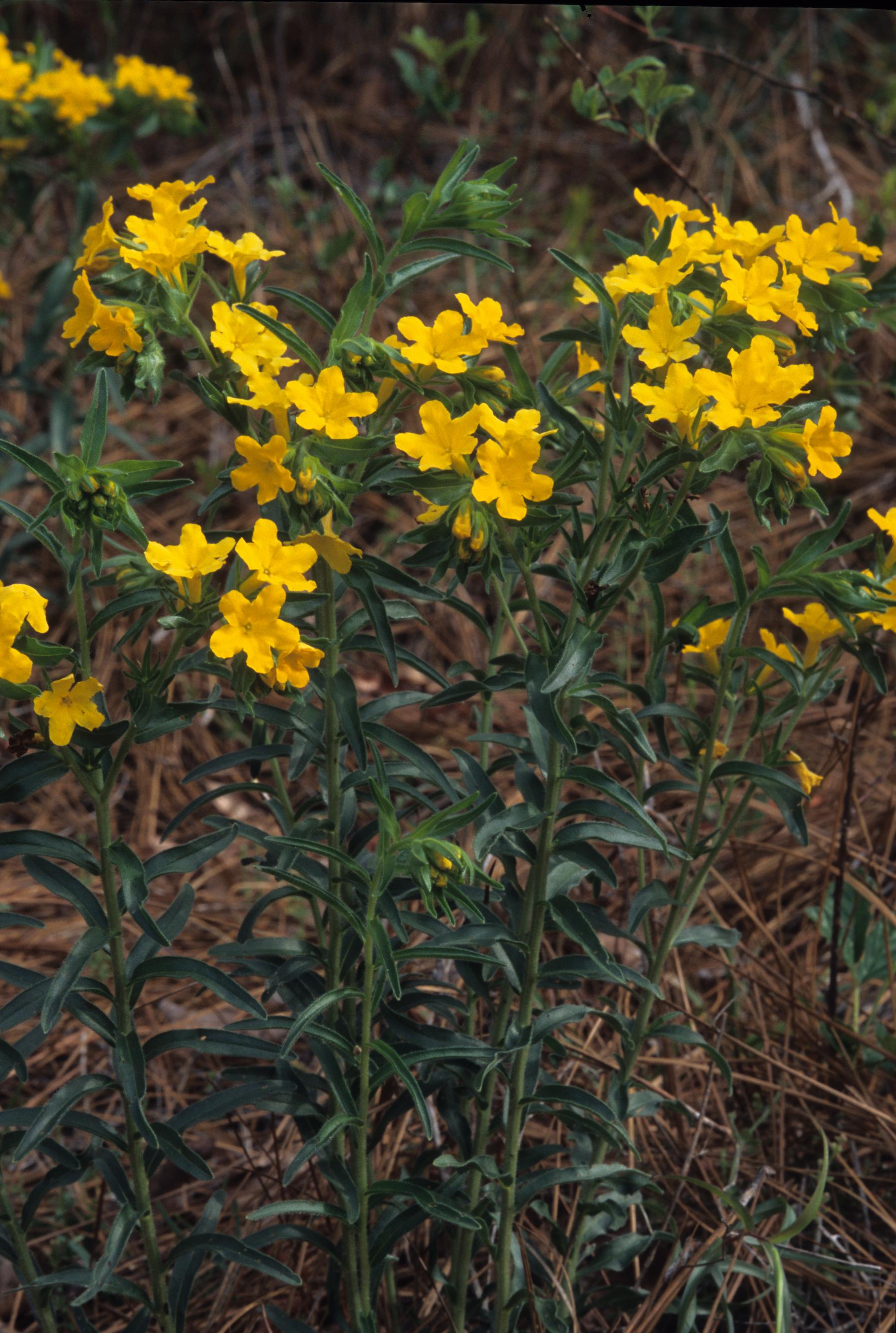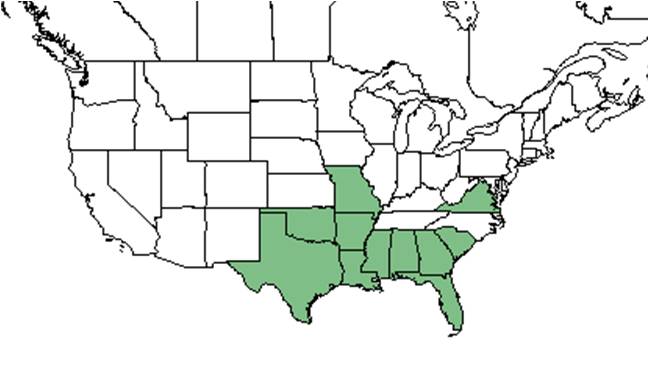Lithospermum caroliniense
| Lithospermum caroliniense | |
|---|---|

| |
| Photo taken by Gil Nelson | |
| Scientific classification | |
| Kingdom: | Plantae |
| Division: | Magnoliophyta - Flowering plants |
| Class: | Magnoliopsida – Dicotyledons |
| Order: | Lamiales |
| Family: | Boraginaceae |
| Genus: | Lithospermum |
| Species: | L. caroliniense |
| Binomial name | |
| Lithospermum caroliniense Lam. | |

| |
| Natural range of Lithospermum caroliniense from USDA NRCS Plants Database. | |
Common name: Carolina puccoon
Contents
Taxonomic notes
Synonyms: Lithospermum caroliniense var. caroliniense; Batschia caroliniensis Walter ex J.F. Gmelin; L. carolinense ssp. carolinense
Description
"Annual or perennial, pubescent or hispid herbs. Leaves usually alternate. Cymes leafy-bracteate, some flowers heterostylic; fruiting pedicels mostly erect or ascending. Calyx cleft into narrow lobes; corolla yellow, yellow-orange, or white (to blue), tubular to funnelform or salverform, throat pubescent, crested or open, lobes spreading and imbricate; anthers included; gynobase flat or depressed. Mericaps 4 or fewer, smooth or wrinkled, with a broad basal attachment scar, the scar often surrounded by a sharp rim." [1]
"Plant 3-10 dm tall, arising from a strong-staining taproot; stems simple or branched, very leafy, hirsute. Cymes dense, leafy-bracteate, elongate at maturity and loosely flowered; flowers heterostylic, all subtended by a bract. Calyx 6-8 mm long at anthesis, 8-10 mm long at maturity; corolla orange-yellow, funnelform, 13-25 mm long; anthers in short-styled flowers at the top of corolla tube and just below the appendages at the throat, style extending only to the middle of tube; anther in long-styled flowers near the middle of the corolla tube, the long style reaching to and beyond the top of the tube, the appendages weakly developed at the throat; corolla nectary 1-0lobed, villous at the base of tube; stigma terminal , minutely villosulous, bilobed. Mericaps white, smooth, often pitted, 3-3.5 mm long." [1]
Distribution
Ecology
Habitat
In the Coastal Plain in Florida and Georgia, L. caroliniense has been found in pinewoods and sand dunes. In human disturbed areas it has occurred in cut over secondary sandhill forest and along highways. [2] Associated species include Berlandiera pumila, Chrysopsis, Licania michauxii, Cnidoscolus stimulosus, Phlox pilosa, Rubus cuneifolius, and Solidago door. [2] Soils include sand and loamy sand. [2]
Phenology
Flowers have been observed from February to May.[2][3]
Seed dispersal
This species disperses by gravity. [4]
Conservation and management
Cultivation and restoration
Photo Gallery
References and notes
- ↑ 1.0 1.1 Radford, Albert E., Harry E. Ahles, and C. Ritchie Bell. Manual of the Vascular Flora of the Carolinas. 1964, 1968. The University of North Carolina Press. 882. Print.
- ↑ 2.0 2.1 2.2 2.3 Florida State University Robert K. Godfrey Herbarium database. URL: http://herbarium.bio.fsu.edu. Last accessed: October 2015. Collectors: Bill Anderson, Loran C. Anderson, Pam Anderson, R. Komarek, T. MacClendon, K. MacClendon, Sidney McDaniel, R. A. Norris. States and Counties: Florida: Bay, Calhoun, Jackson, Liberty Georgia: Decatur, Dougherty. Compiled by Tall Timbers Research Station and Land Conservancy.
- ↑ Nelson, G. PanFlora: Plant data for the eastern United States with emphasis on the Southeastern Coastal Plains, Florida, and the Florida Panhandle. www.gilnelson.com/PanFlora/ Accessed: 12 DEC 2016
- ↑ Kirkman, L. Katherine. Unpublished database of seed dispersal mode of plants found in Coastal Plain longleaf pine-grasslands of the Jones Ecological Research Center, Georgia.